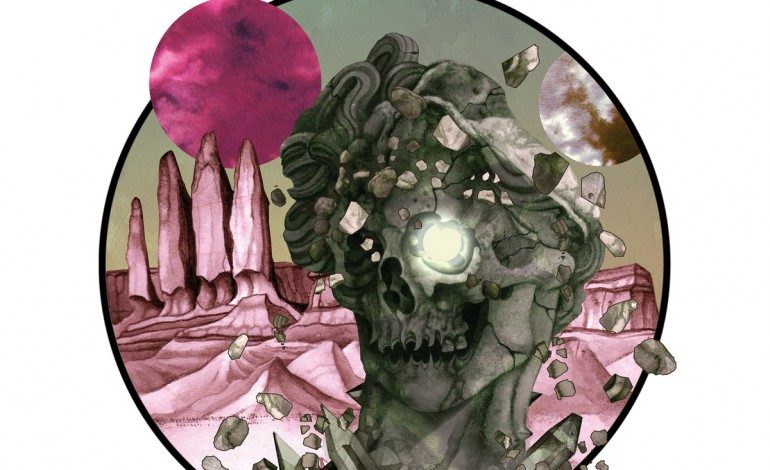

Time Keeps on Slippin’
Hey, wanna know something funny? Darkest Hour have been around for over twenty years. That’s 175,200 hours in the dark. Feel old yet?
Yes, if one can believe it has been that long, the D.C. group rose to notoriety (if not legitimate fame) with the rest of the so-called New Wave of American heavy metal in the early 2000s — around the time when the masses finally got sick of seeing and hearing Korn and Limp Bizkit everywhere they looked. But Darkest Hour managed to cleverly sidestep all of the bile that has been retroactively dumped on other metalcore bands, like Killswitch Engage and All That Remains, by sounding irrefutably closer to At The Gates than any of their peers. Now that the metalcore hype train has long since derailed and we can finally all examine Darkest Hour through a slightly clearer lens, study reveals that (a) Darkest Hour is still pretty good and (b) their latest offering, Godless Profits & The Migrant Flora, isn’t nearly as stale as typically pessimistic metal fans might expect. Thankfully the band has done some abrupt backpedaling from that pop-tastic trashfire of a self-titled record (lest we forget the horrendous, squeaky clean, mirror-shined chorus of “Departure”), and found an avenue that will please old fans while existing as more than a stylistic retread. That’ll teach those jerks to creatively experiment and try new things!
Anyway, opener “Knife in the Safe Room” rubs elbows with the hardcore-leaning deathrock over which Trap Them currently holds a de facto monopoly. At first listen, “Knife,” along with the ferocious d-beat that fuels “In The Name of Us All,” feels radically far from the Iron Maiden-influenced dual guitar harmonies that marked Deliver Us, a record with an overall M.O. of mid-paced melodeath. However, the punk sound isn’t a total about-face for Darkest Hour. It’s merely the native song of the band’s homeland calling out to them, a reemergence of the D.C. hardcore influences that’ve coursed through the metal band’s veins since Darkest Hour’s 2000 debut, Mark of The Judas – the past Darkest release to which Godless Profits is most sonically akin. The new album sees the time-honored teachings of Bad Brains and Minor Threat come to fruition in a contemporary metal context…even if such a noble endeavor occasionally triggers a unique type of cognitive guitar dissonance that exclusively comes from jamming a sweeping, perfectly executed, dual harmony guitar lead up against a series of Greg Ginn-style atonal screeches and divebombs. When it all blends together, the solution is something similar to the razor-sharp crossover thrash favored by groups like Toxic Holocaust and Warbringer, though certain cuts do adhere pretty strictly to most people’s idealization of Darkest Hour’s sound. “Last of the Monuments” returns to the majestic Swedish death metal that brought Darkest Hour their first few trickles of critical praise (now if only Dark Tranquility and In Flames would follow suit). “Beneath It Sleeps” touts all the minor key melancholia of a Jester Race cut, despite all the punk ferocity swirling around it. They even took the time to throw in “Widowed” — a neo-classical guitar interlude that sounds stolen out of Hetfieland and Hammet’s Big Book o’ Tasty Licks — as a token of their loyalty to the classics.
Like new Deftones releases (usually) do for nü metal, Darkest Hour’s Godless Prophets & The Migrant Flora reminds fans and filthy casuals alike that metalcore can actually still be good if played with restraint and respect for the past and true creativity. Darkest Hour carry themselves with dignity and never skimp on guitar theatrics, and nowadays that’s about all you can ask for from a band that’s put in this much time.
